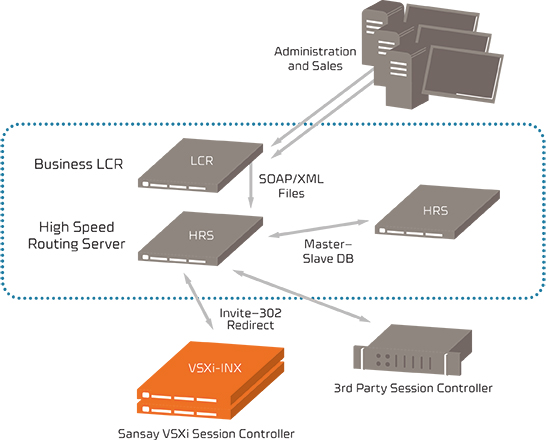The Rome HRS was designed specifically for centralized high speed intelligent routing of voice, video and messaging. It is built upon a software driven, COTS hardware foundation and as a stateless route engine, the HRS scales to a very large calls per second (CPS) while supporting many SBC instances. In addition to high CPS the HRS can support large route tables which are held entirely in Random Access Memory (RAM) for fast look-up operations. As shown below route and rate tables may be provisioned by a GUI-based provisioning tool or from the Business LCR server or other system that supports a Sansay SOAP XML API.

The HRS is queried by the VSXi or 3rd party session controller with an invite and SIP 302 is returned with the routing information presented back to the session controller. The HRS provides the following additional key functions:
- Sophisticated Least Cost Routing (LCR) with multifactorial jurisdictional determination and routing based
- Dialed Number (DNIS)
- Location Routing Number (LRN) or Jurisdiction Indication Parameter (JIP)
- Billing Telephone Number (BTN/ANI)
- 250M unique route entries
- 100M Jurisdiction Match Entries (ANI-DNIS comparisons)
- 100M consortium numbers such as GSMA that are distinct from RN.
- Versioned route tables stored for on-board table backup
- 20,000 queries per second
- Standard SIP 302 redirect support
- SOAP/XML API for provisioning
The HRS can control the provisioning of VSXi in stand-alone or cluster configurations(multi-node or multi-site) simplifying the provisioning of the VSXi in the network and increasing the overall network performance. The HRS can control the customer and vendor behavior for all aspects of provisioning and routing with an intuitive interface.